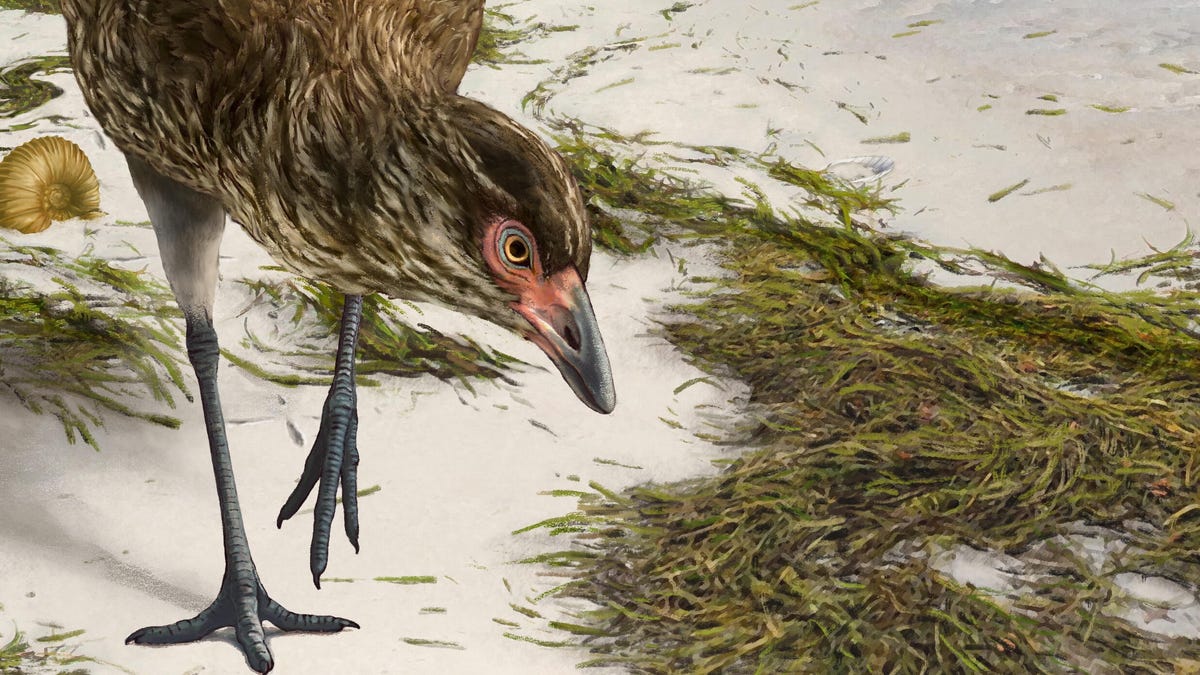Scientists discover 'Wonderchicken,' the oldest modern bird fossil
That settles it: The wonderchicken came first.

Na-na-na-na-na-na-na-na Wonderchicken!
A team of international paleontologists have uncovered the oldest modern bird fossil yet, dating their find to approximately 67 million-years ago -- a time just before the Earth was slammed by a massive asteroid that ended the Age of Dinosaurs.The new find challenges our understanding of the origins of living birds and includes a wonderfully-preserved skull resembling today's ducks and chickens.
It is my pleasure to introduce to you Asteriornis maastrichtensis, or as it's been lovingly dubbed, the "Wonderchicken".
A study, published in the journal Nature on Wednesday, describes the discovery of a collection of bones found embedded in rocks within the Maastricht formation, a fossil site located in Belgium. Paleontologists saw leg bone fragments sticking out of a rock face at the site and ran their find through a high-resolution X-ray scanner. Just below the surface, the scans revealed a fantastically-preserved skull.
"Until we CT scanned some rocks with poorly preserve bird limb bones poking out, we had no idea how spectacular this new fossil was," says Daniel Field, a paleobiologist at the University of Cambridge and first author on the new study
"This was the shock of our scientific careers, and when we realized that the fossil showed some similar features to living chicken-like birds, the name Wonderchicken was born."
Wonderchicken!
The skull is almost entirely intact, which allows researchers to conduct a more thorough analysis of where the wonderchicken would have sat on the tree of life. The team found the skull mostly closely resembles that of birds in the group Galloanserae, which includes landfowl and waterfowl -- birds like chickens, quail and geese. Dating the find to between 66.7 and 66.8 million years gives researchers a clearer understanding of the evolution of modern birds.
"This fossil tells us that early on, at least some modern birds were fairly small-bodied, ground-dwelling birds that lived near the seashore," said Field.
The Maastricht formation contains fossils from the time just before an asteroid struck the Earth and completely changed the landscape. That fact makes this a particularly interesting find and inspires the scientific name Asteriornis -- a reference to the Greek goddess of falling stars who, in one of the ancient myths, transforms into a quail.
Because of its link to present-day birds, the Wonderchicken must have been able to survive through the dinosaur age apocalypse. Survivors of that event are believed to share a number of features and the Wonderchicken's relatively small size and shoreside home fit the bill perfectly.
The location of the find, however, is surprising. It challenges some of the previously held ideas about where modern birds likely originated.
During the era in which the Wonderchicken lived, the Earth was made up of only two giant continents -- Gondwana in the south, made up of present day landmasses like Australia, Africa and South America, and Laurasia in the north, made up of Asia, Russia and Europe all smashed together.
Previous finds have led paleontologists to speculate modern day birds mostly originated in Gondwana. Wonderchicken, being found in modern day Belgium, would have been part of Laurasia.
"This is the first modern bird fossil ever found from the Age of Dinosaurs in Europe, suggesting that future discoveries of even older Mesozoic modern birds may come from European localities," says Field.
Ongoing work on the fossil will continue, but Field notes he's keen to get back out and search for more evidence of modern birds.
"Hopefully, once the pandemic dies down, we will be able to get back out into the field and find even earlier evidence of modern birds from the Age of Dinosaurs."
And, before you go, I know what many of you are thinking: Can we eat the wonderchicken?
"I'll bet the Wonderchicken would have been eminently edible," Field says, "close to the ancestor of ducks and chickens—why not?!"
Correction, March 18 4:40 p.m. PT: An earlier version of this piece suggested you could not eat the Wonderchicken. It is, at least in theory, possible the Wonderchicken would have been edible.

